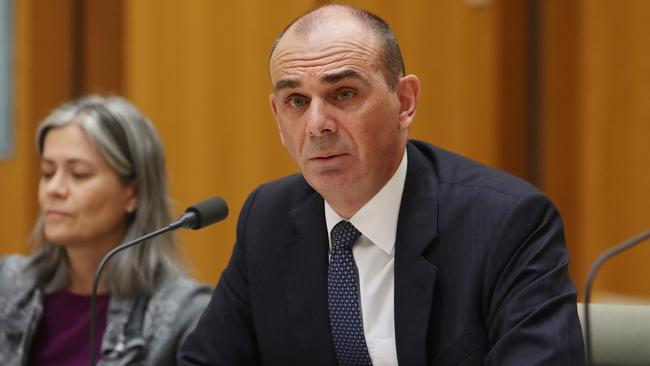
Superannuation industry analyst Michael Rice says the new legislation, which is set to begin on July 1, will not change the investment strategy of the larger well run super funds.
“They have outperformed the indices in the past and they will be confident they can still do this,” he says. But the introduction of new performance comparisons, ranking funds against sector benchmarks and including both investment fees and administrative fees in the comparisons, will add to pressure for more consolidation in the sector.
“All up, we are heading to a much smaller number of very large funds,” Rice says.
The biggest super fund in the country is the $210bn AustralianSuper. This is followed by the $140bn Aware Super, created last year from a merger of NSW-based First Super with VicSuper and WA Super.
The proposed merger of SunSuper and QSuper will create a larger fund with $200bn in assets and two million members.
AustralianSuper, which is now well and truly part of the super industry establishment — as former establishment leader AMP struggles — has taken a low-key approach to the proposed legislation from the start.
It opted not to join a large group of chief investment officers from other funds who expressed their concerns with the sector benchmarks announced by the government, particularly around infrastructure investments. The government’s announcements of draft regulations for the bill showed it has been listening to industry complaints, introducing a broader range of indices for funds to compare themselves against.
The government appears to have gone some way towards addressing concerns about the legislation although large sections of the industry would have preferred it was not introduced at all given the cost of compliance involved.
Some in the industry are also worried about the sections in the legislation which gives the government the power to ban certain unspecified investments it deems to be inappropriate.
Exactly how this power may be used is not clear, but industry players say this has the potential to give any government the power to step in and ban investments.
They argue that this represents a step into the realm of what should be a private sector decision.
One observer argued that it could, for example, give a future government the power to ban super funds from investing in coal mines or any other sector it deemed inappropriate.
The other arm of the law raising concern is the power for prudential regulator APRA to strike down any spending by super funds which it deems not to be in the best interests of its members.
Some argue APRA already has this power in general and every super fund will argue that their spending is in the best interests of their members.
But observers say the new law provides greater scope for APRA to start involving itself more deeply in the decision making of funds with the law shifting the onus of proof, requiring fund trustees to justify that any spending they do in their members’ best interests.
Just how this will be administered will be watched carefully, particularly by the industry fund sector which is wary of changes.
Stepping back from the detail, the legislation will increase the pressure for mergers of super funds by putting sharper focus on both administrative costs and investment costs by super funds.
While big is not always beautiful, there are economies of scale in both administration and investment fees.
As Rice points out, small super funds lack the scale of larger funds to demand lower investment fees by fund managers which will leave them “exposed against their peers”. Very large funds, he adds, can also bring some of their investments in house, further driving down investment costs.
AustralianSuper has been able to reduce its costs by bringing in much of its investments in house but smaller funds still opt to outsource their investing.
After a slow start, momentum is gaining in the consolidation of the super fund sector. The number of APRA regulated funds has come down from the 279 which were in operation in 2013 when the Stronger Super reforms were introduced to just over 160 today.
APRA has long been keen to see a faster pace of mergers with chair Wayne Byers arguing that consolidation “has helped drive better governance, strong performance and lower costs”.
But he told a Senate committee recently APRA believed there was still “plenty of scope for further consolidation”.
Some observers argue that the sector is headed towards a smaller number of megafunds of more than $100bn in assets.
The introduction of the performance comparison regime, initially for MySuper products from July 1, will add to the pressures on trustees.
The law has the potential to ban funds which show persistent underperformance from accepting new members. Some see this as a blunt instrument which will encourage funds to invest conservatively by hugging the relevant index rather than opting for what it may see as a more ambitious investment strategy.
The whole point of the exercise is to weed out persistent underperformers — an aim which no one can criticise in theory.
But how the new regime works in practice, and how the introduction of specific benchmark impacts the investment decisions on funds, remains to be seen.
While performance comparisons seem like a good idea, it may have been a lot easier and swifter for APRA to take a more direct approach to those funds it knows are chronic underperformers rather than subject the whole sector to a straitjacket of specific performance comparison tests.
That said it now looks as if the legislation will pass and that the momentum towards more mega super funds will continue.







While the superannuation industry welcomed proposed changes to the Your Super, Your Future legislation on Wednesday, the new laws will introduce a new regime which will further add to pressure for mergers in the $3 trillion sector.